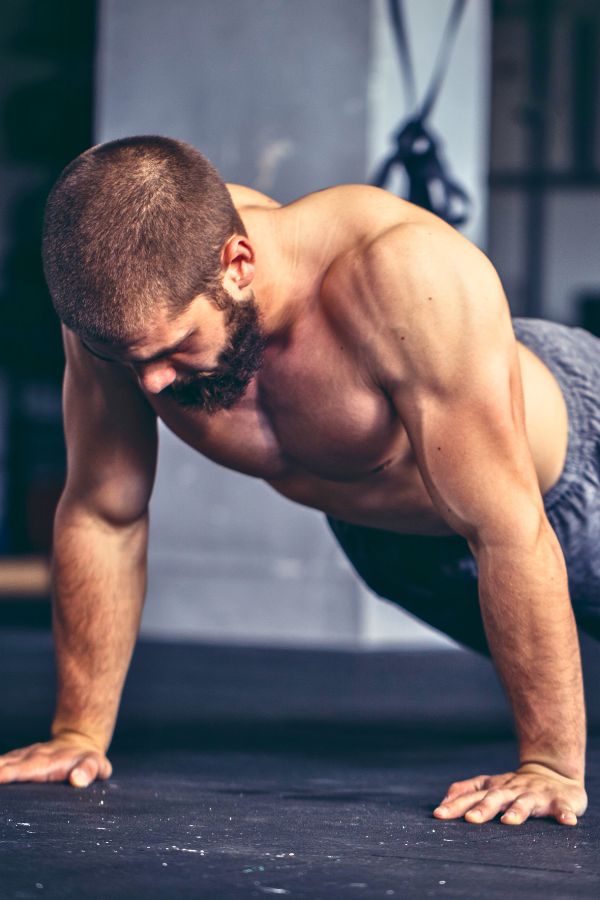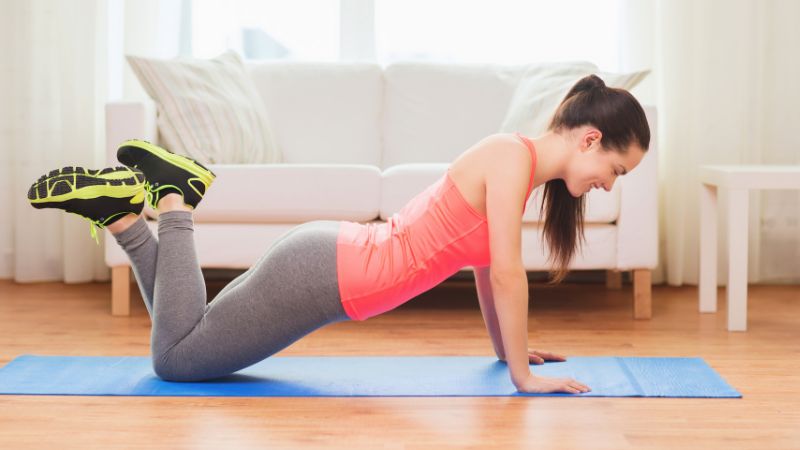At the core of every strong body is the basics. Foundational strength training exercises that build strength, stability, and coordination.

Introduction: Why Foundational Movements Matter
When it comes to fitness, it’s easy to get caught up in trendy workouts, complicated routines, or chasing numbers on a barbell. These are the movements your body is designed to do: squatting, hinging, pushing, pulling, lunging, and carrying.
Foundational movements matter because they’re not just exercises; they’re the blueprint for how we move through life. Every time you bend down to pick up a child, push open a heavy door, carry groceries, or climb a flight of stairs, you’re performing some version of these basic patterns. Training them in a controlled, intentional way not only builds muscle but also improves the way you handle real-world tasks, making daily life easier and reducing your risk of injury.
For beginners, starting with foundational movements creates a safe and effective entry point into fitness. Instead of jumping into advanced or high-intensity routines that can feel intimidating, these movements teach body awareness and proper mechanics. They lay the groundwork for everything else you want to achieve, whether that’s lifting heavier weights, running faster, or simply moving through life with less pain and more confidence.
Even for seasoned athletes, revisiting the basics ensures long-term progress. Strength built on shaky foundations eventually leads to breakdowns, but strength built on solid movement patterns creates resilience.
The beauty of foundational movements is their simplicity. With little or no equipment, anyone can start practicing them and reap the benefits. They are the building blocks of fitness, and mastering them unlocks strength, stability, and freedom of movement at every stage of life.

Overview of Foundational Exercises
Foundational exercises are the building blocks of strength and movement. They target major muscle groups, improve coordination, and prepare the body for both everyday tasks and more advanced training.
Push Movements
Push exercises strengthen the chest, shoulders, and triceps while training your body to generate force away from you. Classics include the shoulder press for overhead strength. And push-ups, which build total-body stability along with upper body power.
Pull Movements
Pulling strengthens your back, biceps, and grip. Moves like rows help counteract poor posture, while pull-ups build serious back and arm strength, making them a gold standard in bodyweight training.
Hinge Movements
The hip hinge is essential for safe, strong movement. Deadlifts teach you how to lift with power while protecting your spine, and glute bridges activate the posterior chain for stronger hips and glutes.
Squat Movements
Squats build leg strength and mobility. The bodyweight squat is the foundation, while the goblet squat adds load and reinforces good technique. Both are excellent for developing balance and core engagement.
Core Movements
A strong core is key to stability in every exercise. The plank develops endurance in the deep abdominal muscles, while the side plank targets the obliques and improves lateral stability.
Carry Movements
Carrying weight while walking challenges grip, core, and overall strength. Farmer’s carries are simple but incredibly effective for real-world strength.
Lunge/Unilateral Movements
Training one leg at a time improves balance and corrects muscle imbalances. Lunges build lower body strength, while step-ups mimic everyday actions like climbing stairs.

Form and Safety Basics
When learning foundational movements, nothing is more important than proper form. Good technique ensures you’re targeting the right muscles, reducing your risk of injury, and building strength that carries over into everyday life.
Common Mistakes to Avoid
Beginners often rush into exercises or sacrifice form for more reps. Common errors include rounding the back during deadlifts, letting the knees cave inward during squats, or dropping the hips too low in a plank. These mistakes not only make the exercise less effective but can also strain joints and connective tissue. Focus on quality over quantity—five perfect reps are more valuable than fifteen sloppy ones.
Importance of Proper Warm-Up and Cool-Down
Jumping straight into a workout without warming up is like driving a car without letting the engine start properly. A warm-up increases blood flow, raises body temperature, and preps your muscles for safe movement. Dynamic stretches, light cardio, and activation drills are excellent options. Likewise, cooling down afterward helps lower your heart rate, improve flexibility, and reduce soreness. Simple stretches, deep breathing, and mobility work go a long way toward keeping your body healthy.
Using Mirrors, Videos, or Trainers to Improve Form
It can be hard to know if you’re moving correctly without feedback. Mirrors are a useful tool for checking alignment, ensuring knees track over toes, or spotting a rounded back. Recording short videos of your workouts can also highlight areas to improve. For the best results, consider working with a certified trainer. Even a few sessions can give you personalized corrections and set you up for long-term success.
Form is the foundation of safe, effective exercise. By avoiding common mistakes, preparing your body properly, and seeking feedback, you’ll build strength with confidence and longevity.
How to Build a Routine
Once you understand foundational movements, the next step is learning how to put them together into a balanced routine. The goal isn’t to do every exercise every day, but to create a simple structure that develops strength, mobility, and endurance without overwhelming your body.
Balance Across Movement Patterns
A good routine includes all the key categories: push, pull, hinge, squat, core, carry, and lunge. This ensures you’re not just strengthening one area but creating a body that moves well as a whole. For example, pairing push-ups with rows balances the chest and back, while squats and lunges develop lower body power from different angles.
Frequency and Volume
For beginners, 2–3 full-body workouts per week is plenty. Start with 2–3 sets of 8–12 reps for each exercise. Over time, you can add sets, increase reps, or progress to more challenging variations. Rest days are just as important as workout days—your muscles need recovery time to grow stronger.
Sample Beginner Routine
- Warm-up: 5 minutes of light cardio and mobility
- Squat: Bodyweight Squats (2×10)
- Push: Push-ups or Wall Push-ups (2×8–10)
- Pull: Rows with a resistance band or weights (2×8–10)
- Hinge: Glute Bridges (2×10–12)
- Core: Plank Holds (2×20–30 seconds)
- Lunge: Reverse Lunges (2×8 per side)
- Carry: Farmer’s Carry with light weights (2×30 seconds)
- Cool-down: Stretch and deep breathing
Progressing Over Time
Start with what feels manageable and add gradually. Increase reps, add weight (even household items like water bottles work), or try more advanced variations once your form feels strong. Remember: consistency matters more than intensity in the beginning.
By combining foundational exercises into a simple, repeatable plan, you’ll create a routine that builds strength, confidence, and momentum for your fitness journey.
basic strength training moves
Strength training doesn’t have to be complicated. In fact, some of the most effective exercises are the simplest ones—the movements that build a foundation for everything else. These basic strength training moves target major muscle groups, improve coordination, and prepare your body for both everyday tasks and more advanced workouts.
Squats
Squats strengthen your legs, glutes, and core. They mimic sitting and standing, making them one of the most practical exercises you can do. Start with bodyweight squats before progressing to goblet or weighted versions.
Push-Ups
Push-ups build upper body and core strength while teaching you how to stabilize your body. Beginners can modify by doing push-ups on their knees or against a wall.
Rows
Rowing movements strengthen your back, shoulders, and biceps. They’re essential for good posture and balance out push-focused exercises like push-ups.
Deadlifts
Deadlifts train your hips, glutes, hamstrings, and core. They also teach you how to safely pick things up off the ground—a skill you use daily. Beginners can start with hip hinges or glute bridges before adding weight.
Planks
Planks are one of the best core-strengthening exercises. They build endurance in your abs, back, and shoulders, supporting every other movement you do.
Lunges strengthen each leg individually, improving balance and stability. They also prepare you for everyday movements like climbing stairs or stepping forward to reach something.
Farmer’s Carries
Carrying weight while walking trains your grip, core, and full-body stability. It’s one of the simplest yet most effective ways to build real-world strength.
These basic moves form the foundation of any strength program. Mastering them with good form will give you confidence, reduce your risk of injury, and set the stage for more advanced training down the road.
bodyweight workout for beginners
You don’t need a gym or fancy equipment to start getting stronger. A bodyweight workout uses the resistance of your own body to build strength, improve balance, and increase endurance. For beginners, this is the perfect way to start a fitness journey because the exercises are simple, effective, and can be done almost anywhere.
Benefits of Bodyweight Training
- No equipment required—just your body and a little space.
- Low barrier to entry for beginners.
- Scalable—movements can be made easier or harder as you progress.
- Builds real-world strength for daily activities.
Beginner-Friendly Full-Body Workout
- Warm-up (3–5 minutes): March in place, arm circles, gentle squats.
- Squats (2 sets of 10–12): Strengthens legs and glutes.
- Push-ups (2 sets of 6–10): Modify with knees or wall push-ups if needed.
- Glute Bridges (2 sets of 10–12): Engages hips and hamstrings.
- Rows (2 sets of 8–10): Use a sturdy table edge, railing, or resistance band if available.
- Plank Holds (2 sets of 15–30 seconds): Builds core stability.
- Reverse Lunges (2 sets of 8 per leg): Improves balance and unilateral strength.
- Cool-down (3–5 minutes): Stretch hamstrings, quads, chest, and shoulders.
strength training at home without equipment
You don’t need a gym membership or fancy gear to get stronger. In fact, some of the most effective strength training exercises use nothing but your bodyweight. Training at home without equipment is convenient, cost-free, and highly adaptable—you can scale the moves to match your current fitness level and progress over time.
Benefits of No-Equipment Training
- Accessible: You can work out anywhere, anytime.
- Functional: Movements mimic real-life actions like squatting, bending, and pushing.
- Scalable: Make exercises easier or harder by adjusting reps, sets, or tempo.
- Low cost: No need to buy weights or machines.
Sample At-Home Routine
- Warm-up: 3–5 minutes of marching in place or dynamic stretches
- Squats: 2×10–12 reps
- Push-ups: 2×6–10 reps
- Glute Bridges: 2×10–12 reps
- Plank: 2×20–30 seconds
- Reverse Lunges: 2×8 per side
- Cool-down: Stretch hips, quads, and shoulders
The key is consistency. Even 15–20 minutes, 2–3 times per week, is enough to build strength over time. By focusing on bodyweight moves, you’ll create a solid foundation for fitness—all from the comfort of your own home





No comments! Be the first commenter?